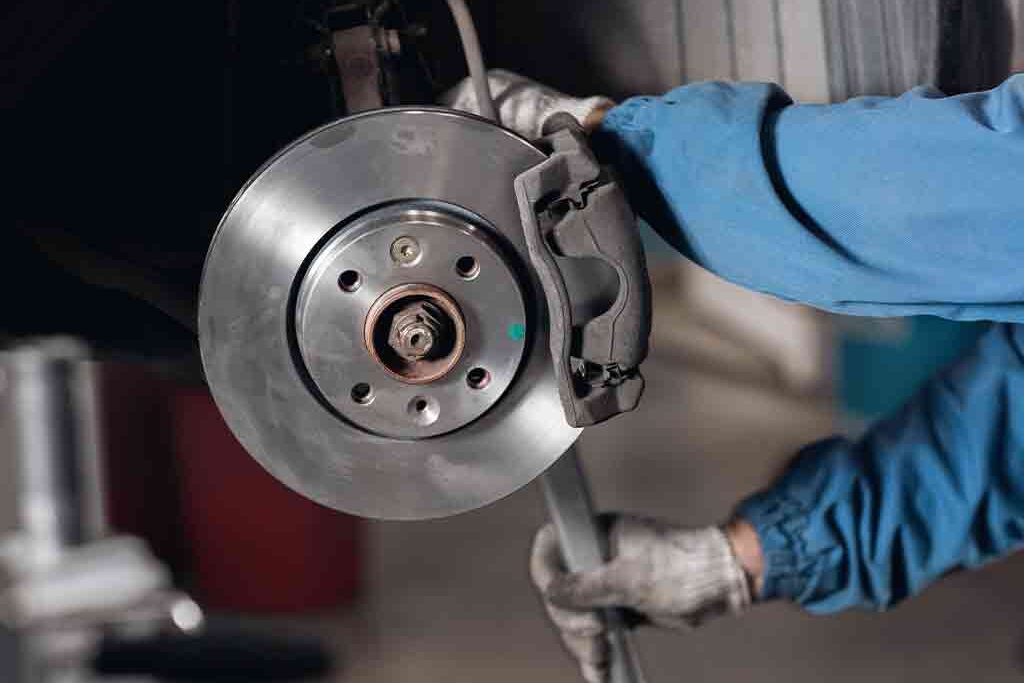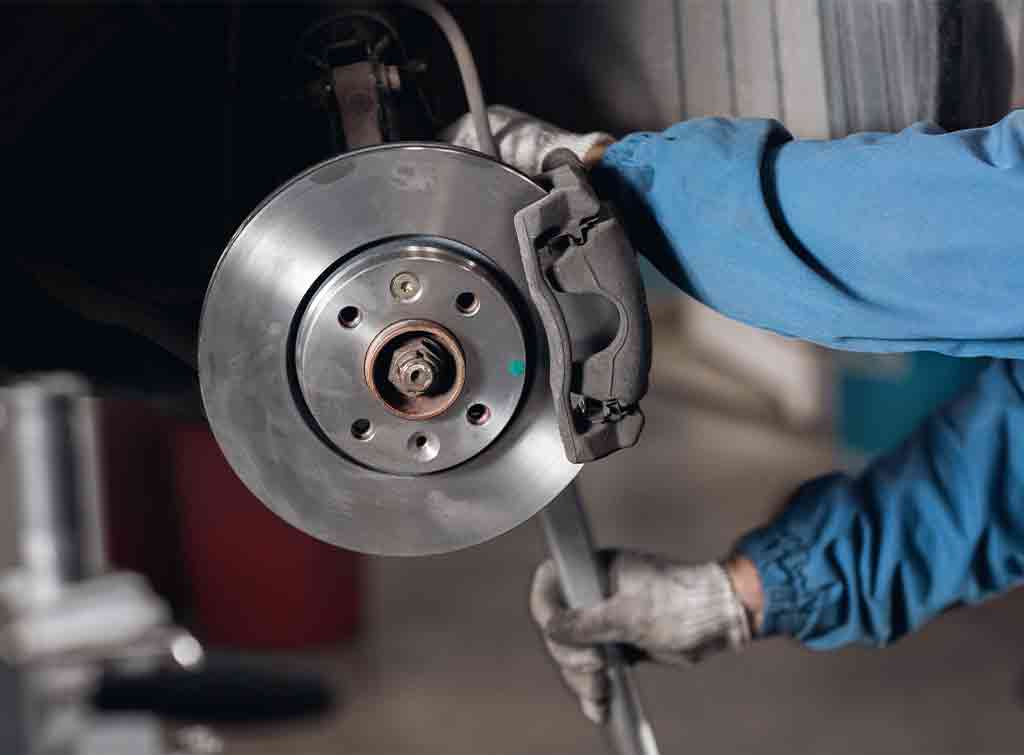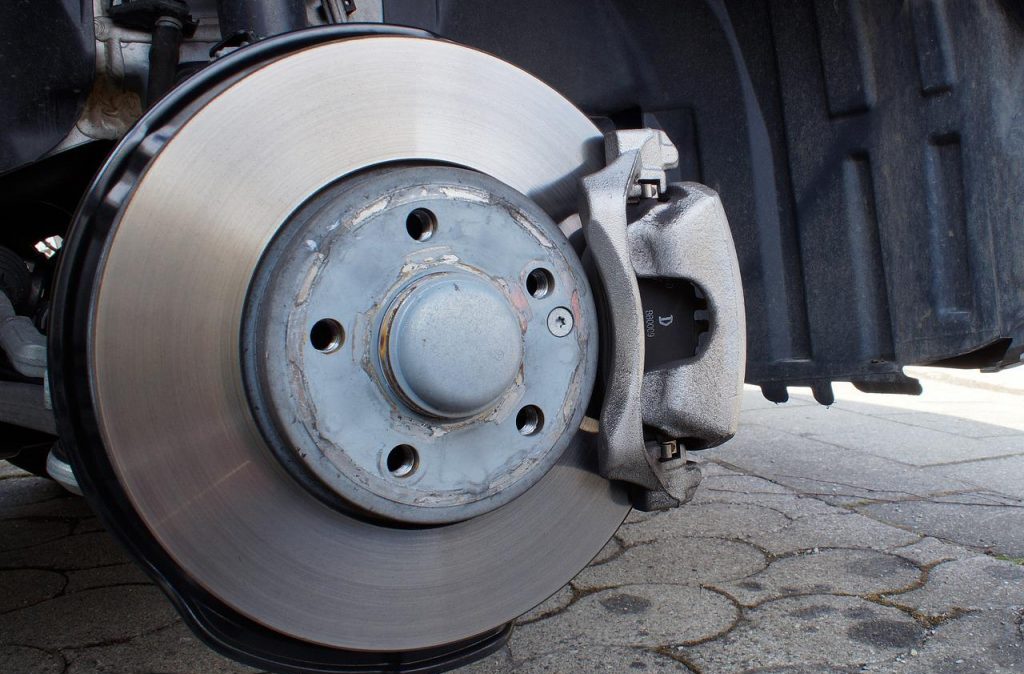Why Brake Pad and Disc Replacement
Brake pads and discs (also known as rotors) work together to stop your vehicle. When you press the brake pedal, the brake pads clamp onto the discs, creating friction that slows down the wheels. Over time, this friction wears both components down.
If ignored, exhausted brake pads can ruin the brake discs and make you lose control of stopping securely. This is why brake disc and pad replacement becomes crucial not just for your vehicle’s performance but also for your safety. When considering maintenance, many drivers ask how much to replace brake pads and discs, since proper upkeep is essential. The cost of replacing brake pads and discs can vary depending on your vehicle type, parts quality, and labor charges. Regular servicing ensures that your braking system stays efficient, and timely brake pad and disc replacement helps you avoid more expensive repairs and maintain road safety.

Signs You Need a brake disc and pad replacement
Made of cordierite, carborundum or aluminum titanate.
At Hydroflush, we suggest that you have your brakes inspected if you have any of the following:
Squealing or grinding sounds during braking
Vibration in the steering wheel or brake pedal
Burning smell while operating
Long-winded stopping
Dashboard warning lights
Once brake pads and discs are replaced in a timely manner, they no longer damage your braking system and keep you safe on the road while minimizing the cost of replacing brake pads and discs in the long run. Drivers often wonder how much to replace brake pads and discs, as expenses depend on the vehicle model and parts used. Regular brake pad and disc replacement ensures smooth performance, prevents further damage, and helps you maintain control while driving safely.

The Brake Pad and Disc Replacement Process
Curious about what goes into a brake disc and pad replacement service at Hydroflush? Here’s a step-by-step breakdown:
Inspection – We start by inspecting your entire braking system, measuring the levels of wear on the brake pads and discs.
Disassembly of Old Components – Old, worn-out brake pads and discs are carefully removed with specialized equipment.
Installation of New Parts – We replace high-quality, OEM-spec or upgraded brake pads and discs.
System Check and Test Drive – We test your brake system after installation to make sure it works perfectly under actual driving conditions.
This is accomplished with efficiency, safety, and maximum performance in mind.
How Often Should You cost of replacing brake pads and discs?
There is no single answer when it comes to the lifespan of your braking components. Brake pads are usually good for 25,000 to 70,000 miles, depending on factors like driving habits, vehicle type, and road conditions. Brake discs generally last longer, but they can wear out faster if they’re paired with worn or uneven pads.
At Hydroflush, we recommend scheduling a brake inspection at least once a year—especially if you frequently drive in heavy city traffic, where stop-and-go conditions accelerate wear. If you’re wondering how much to replace brake pads and discs, the cost can vary based on your car model and the quality of parts used, but timely replacement is always more affordable than risking further damage or unsafe braking.
Why to Go for Hydroflush for Brake Disc and Pad Replacement?
Here’s why Hydroflush stands out to be the best in brake disc and pad replacement:
1. Qualified Experts: Our expert technicians have years of experience working with all types of braking systems—small cars to performance SUVs.
2. High-Quality Parts: We use only high-quality cost of replacing brake pads and discs, meeting or beating OEM levels of durability and performance.
3. Competitive Rates: We practice fair, upfront pricing. No surprises. No guesswork.
4. Fast Turnaround: The majority of cost of replacing brake pads and discs work is done on the same day, keeping your vehicle on the road with minimal downtime.

How Much to Change Brake Pads and Discs?
One of the most frequent questions we receive is: how much to change brake pads and discs? Replacing brake pads and discs costs are determined by different factors:
Vehicle Make and Model – High-end or sports cars tend to have more costly parts.
Type of Brake Pads/Discs – Materials such as ceramic, semi-metallic, or carbon fiber are priced differently.
Labor Charges – These will vary depending on where you are located and how complex the work is.

